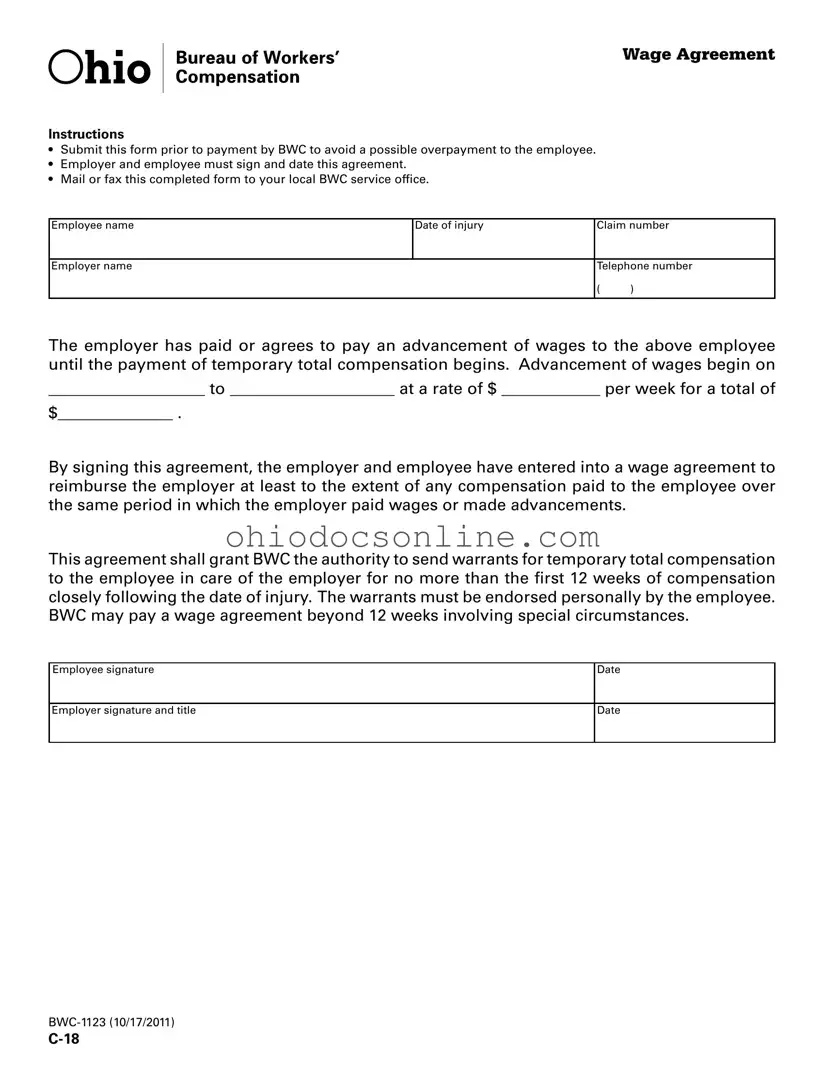Wage Agreement Ohio Template in PDF
The Wage Agreement Ohio form is a document that outlines an agreement between an employer and an employee regarding the advancement of wages. This form must be submitted to the Bureau of Workers' Compensation (BWC) before any payments are made to prevent overpayment issues. Both parties need to sign and date the agreement to ensure compliance and proper processing.
Open Editor
